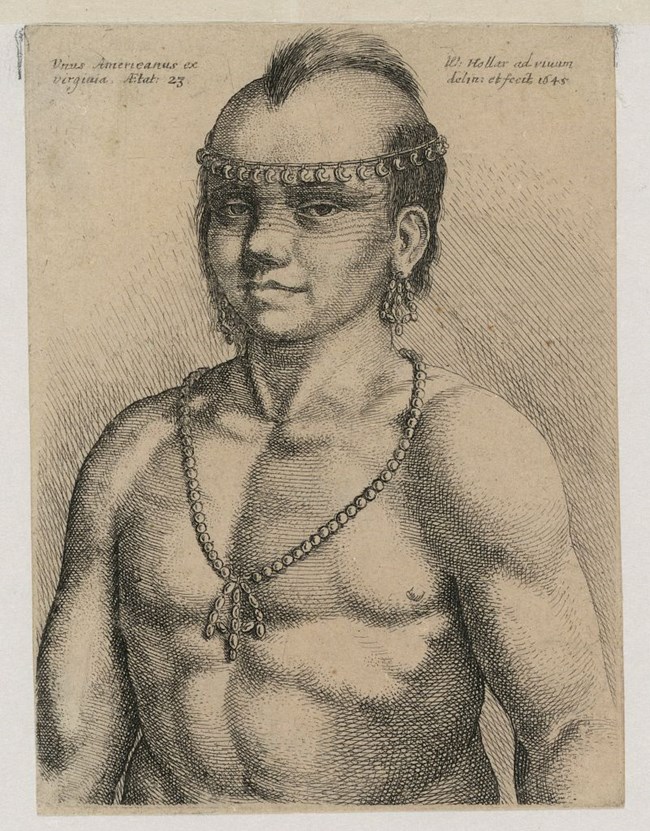Part of a series of articles titled Selections from Historic Contact: Early Relations Between Indian People and Colonists in Northeastern North America, 1524-1783.
Article
Historic Contact in the Northeast: Part II

Collections of the Library of Congress. https://www.loc.gov/item/95513412/
Selections from the National Historic Landmark Theme Study
By: Robert S. Grumet, National Park Service, 1992
Historic Contact in the Northeast Part II
Indian people generally have regarded the story of contact as parable and prelude. Drawing from their own traditions, many Indian commentators have seen enduring themes of conflict and cooperation enacted in contact events. Near all trace the origin of present conditions to contacts beginning 500 years ago. … The general dimensions of contact in the Northeast, mutual discovery, conflict, accommodation, the military and political subjugation of Indian people, and their continuing struggle to preserve their cultures and traditions, are widely known and extensively documented. Although most people appreciate the complexities of this encounter, many people today regard contact between Indian, European, and African people in the Northeast as an invasion of the western hemisphere by people primarily from Europe. Northeastern contact certainly can be understood as a devastating onslaught mounted on a continental scale. Europeans first arrived uninvited to the region’s shores during the last decade of the 15th century. Conflict subsequently dominated aspects of most relations between natives and newcomers as both struggled for survival and sovereignty during the next 300 years. The initial phase of this struggle finally ended when rebellious Americans wrested control of the region from Great Britain at the end of the War of Independence in 1783. By then, most surviving native people were dispossessed by newcomers from all but the poorest of their lands. Denied representation in new American legislatures and forced to accept unasked-for and frequently meager protections of American law, most Northeastern native people had to acquiesce to the realities of life with foreign strangers or move.
A closer look at records of the time shows that the outcome of early contacts in the Northeast was neither irrevocable nor inevitable. Instead, contemporary documents reveal that people then as now rarely took the future for granted. Although nearly all recorded expressions of Indian opinion reflect feelings of anger, apprehension, or approbation, native people confronting military, cultural, and pathogenic invasions probably tried to hope for the best as they prepared for the worst. While most newcomers generally expressed confidence and assuredness in their writings, experience showed even the most optimistic settler that many of their perceived advantages were more apparent than real.
Seen from the vantage point of the present-day, the defeat and dispossession of Northeastern Indians by European invaders appears as an inevitable and unavoidable outcome of inexorable historical processes. Possessing seemingly superior tools and weapons and inadvertently aided by and occasionally deliberately employing new diseases, newcomers settled along the Atlantic seaboard achieved overwhelming numerical superiority over neighboring Indian people by 1700. By the time the new American republic won its independence from Great Britain 83 years later, near two and a half million newcomers controlled most of the Northeast. More than 1,800,000 of these settlers were Europeans. The rest, numbering more than 500,000 individuals, were people of African ancestry. Total Northeastern Indian numbers, by contrast, had dwindled from more than a quarter of a million people to less than 50,000 during the same period. Thousands of people of mixed parentage born to unions between Indians and people of European or African descent, for their part, became members of existing communities or formed small multi-racial or multi-cultural enclaves of their own.
Last updated: May 16, 2019
